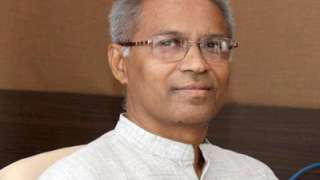MEDIA
Indian classical music gets its groove, the AI way
www.hindustantimes.com | December 1, 2019
Professor Vinod Vidwans’s artificially intelligent creative expert system generates a bandish (a musical composition) in a given raga and renders it in traditional classical style
Professor Vinod Vidwans has extensively studied the ancient treatises on Indian music such as Naradi Shiksha, Natya Shastra of Bharata, and Sangeet Ratnakar of Sharanga Deva which provide common foundations for Hindustani as well as Carnatic music. He found that the musical concepts mentioned in these treatises are profound and there exists a logical consistency. Curious, he started working on a system that is a culmination of his academic background of fine arts, design, philosophy- logic and doctoral research on creativity.
He developed a software that generates computational Indian music using artificial intelligence (AI). His artificially intelligent creative expert system generates a bandish (a musical composition) in a given raga and renders it in traditional classical style.
So, how will this help the current music scenario?
“The AI enabled system, along with a new bandish or a composition, also generates a text file giving the details of the composition so that you can document the textual description of the rendering for future reference and analysis. It can be a useful tool to learn music and understand these rules with the help of a text file.”
The software is also capable of generating novel musical phrases appropriate for a specific raga while rendering, so it is useful for experienced musicians to use it as a supplementary tool for riyaz (practice). The software can be useful for researchers in musicology for testing existing theoretical concepts in Indian music.
For a common listener, the software can be a handy device to generate a new composition every time you want to listen to a specific Raga. If you like the composition, you can save it and listen to it again and again. The system keeps generating new compositions without repeating them. Presently, the system generates compositions in an artificially created instrument which produces flute-like sound and artificial sound of tanpura. Thus, the AI system will be useful to learners, researchers and musicians in various ways.
Revealing details about the project, he says, “The expert system is supposed to possess the knowledge of an expert in the domain. I encoded the principle concepts of Indian music in the form of generic rules to generate music. It’s a rule-based system. This system does not have any database. It is not a database driven system. In fact, it generates the required musical data following the rules. This is the strength of artificial intelligence.”
Vidwans has encoded generic rules of Indian classical music in this system. The software is capable of generating appropriate alaaps, taans and swara-vistar following these rules.
“You provide Aroha (ascending order of notes) and Avaroha (descending order of notes) along with Vadi (a dominant) and Samvadi (a sub-dominant) notes of the raga to the software and it generates a bandish at the click,” he said.
He adds, “The main motivation of the research effort was to understand the logical and scientific foundations of Indian classical music. It was realised that the concepts from ancient treatises are so scientific that when you implement them on computers, the AI-enabled system starts generating Indian music.”
(One can listen to the samples of Indian AI Music generated by the expert system on http://computationalmusic.com )
- Vinod Vidwans, Controller of Examinations, FLAME University

